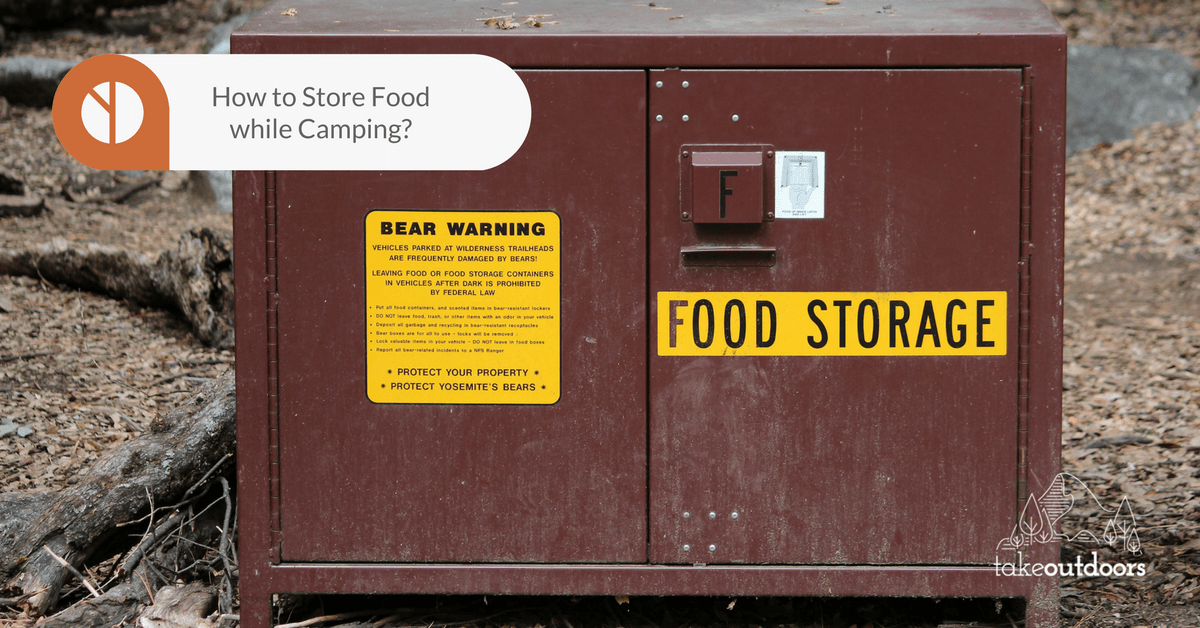We use affiliate links and may receive a small commission on purchases.
Read more about us.
One of the highlights of going on a camping trip is enjoying the food you bring. Cooking steaks over an open fire while the potatoes are baking in the coals is an experience that can’t be beaten! And of course, s’mores are the traditional melt-in-your-mouth dessert.
But, since you can’t get by on steaks and dessert alone, you have to think about how to store other foods like fruits, vegetables, dairy products, and condiments. We have some helpful tips on how to prepare food for camping and keep it fresh the whole time you’re communing with nature.
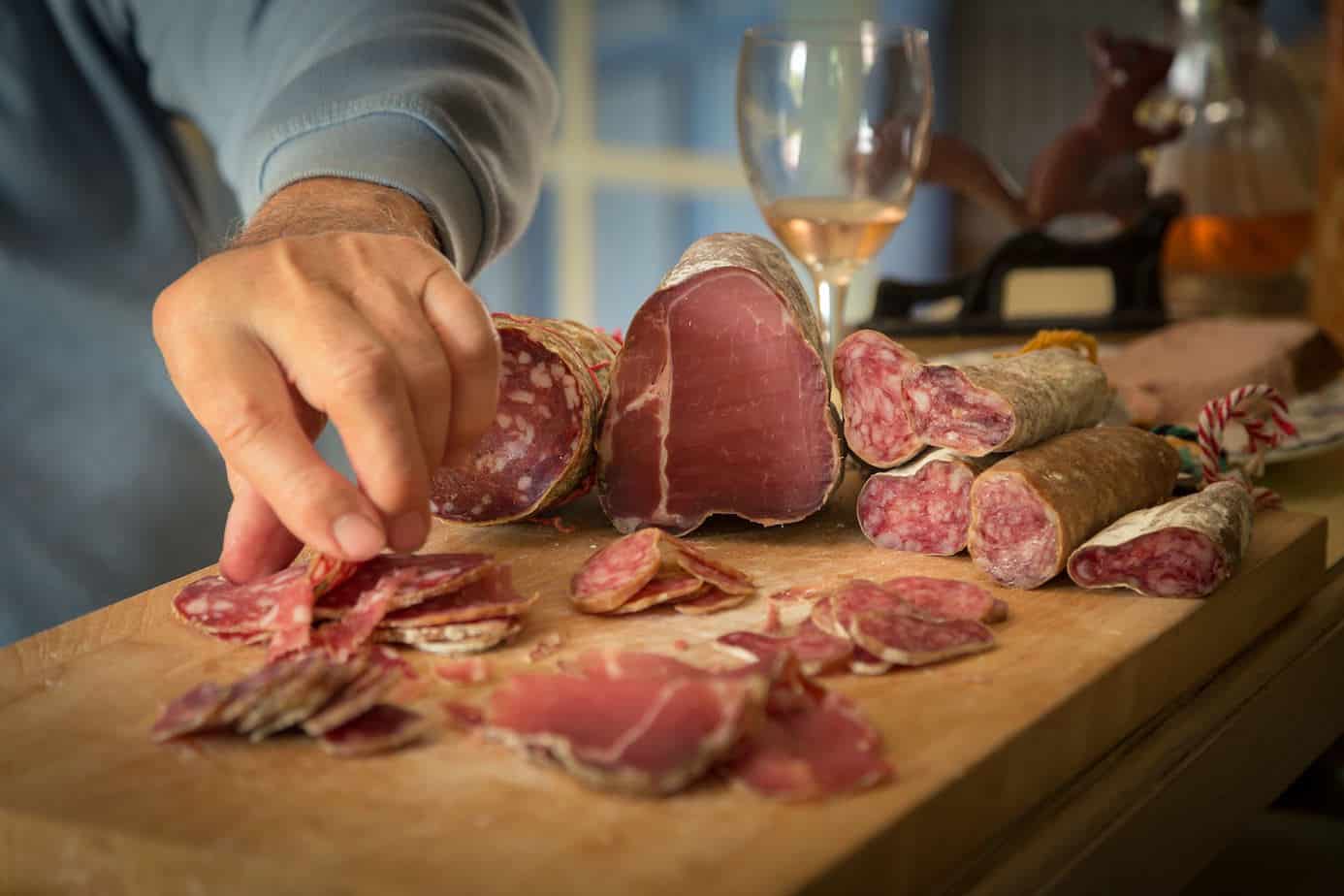
Non-Refrigerated Food Products
- Proteins: cured meats like hard salami, nuts, powdered eggs, unpasteurized eggs, well-cooked bacon
- Dairy Products: butter (2-3 days), hard cheeses, powdered milk
- Vegetables: broccoli, carrots, celery, onions, potatoes, tomatoes, zucchini
- Fruits: apples, lemons, limes, grapefruit, oranges
- Dry Goods: beans, bread, cereal, crackers, oatmeal, rice, pasta, tortillas
- Extras: beef jerky, energy bars, peanut butter, raisins, trail mix
There are a lot of foods to bring with you that are tasty and will do fine in a shady area of the campsite in proper containers. Hard salami and hard cheeses like parmesan and cheddar keep well without refrigeration.
Another suggestion is to bring a canned ham to slice for making lunch sandwiches. Citrus fruits keep especially well, and tomatoes keep best if they’re firm and not too ripe.
Make sure that all the produce you pack is in the best shape for camping with no bruises or soft spots.
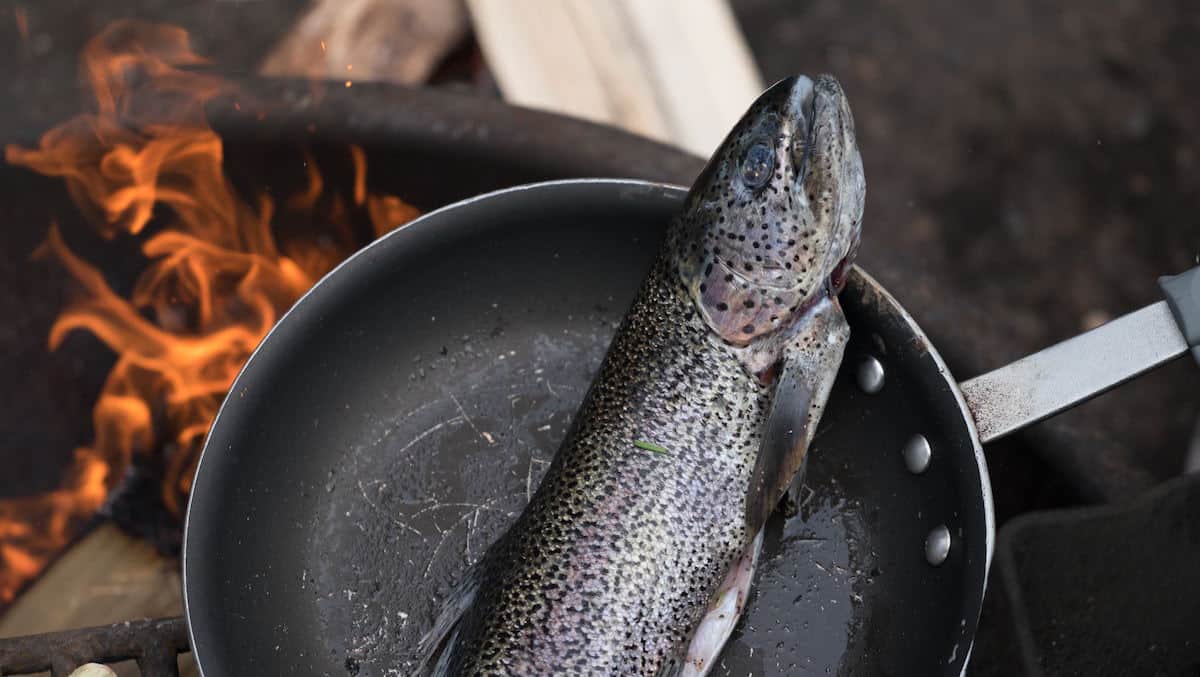
Refrigerated Food Products
- Proteins: fish, pasteurized eggs, poultry, meat
- Dairy Products: half & half, milk, soft cheeses, yogurt
- Vegetables: avocados, bell peppers, celery, lettuce, mushrooms, squash
- Fruits: grapes, strawberries, blueberries, cherries, mangos
- Extras: jam/jelly, mayonnaise, salad dressings
One thing that can really put a damper on your long-awaited camping trip is having food spoil before you can eat it. And if you don’t know about the spoilage, you and your fellow campers might get a nasty stomach bug to ruin your fun. Handling food properly is also very important since improperly washed and stored food can harbor salmonella or even E.coli.
Store your perishable fruits and vegetables in paper bags and separate them so they don’t cause each other to overripen with the ethylene that each gives off. Lettuce does best if it’s washed and refrigerated just before the camping trip. Other fruits and vegetables may have natural preservatives on the skin, so wash them off just before use. Unless you’re bringing a couple of enormous coolers, it will be necessary to pick and choose which perishable products to bring. Planning your meals in advance will help with this.
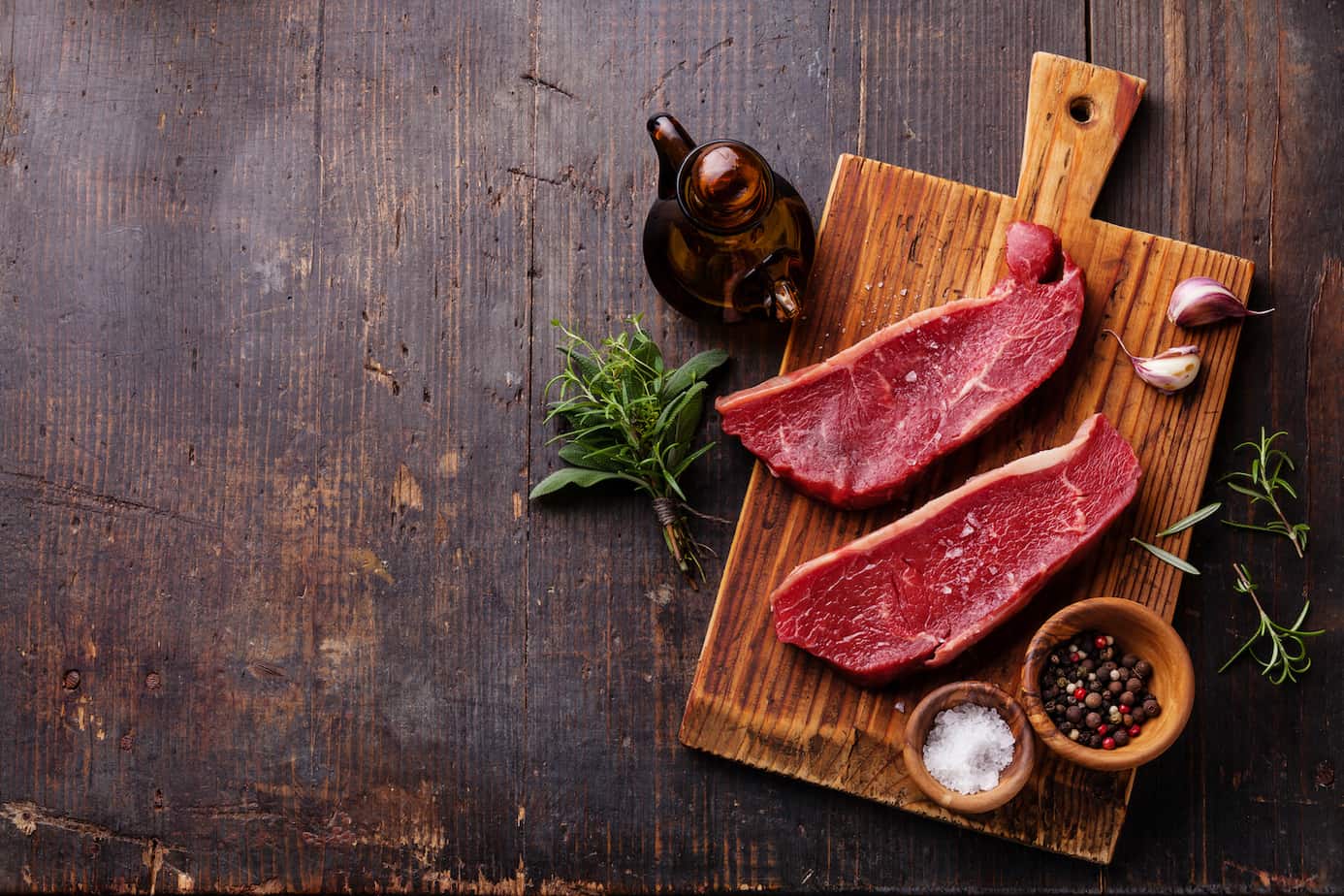
Handling Meat
Keep meat and other foods separate from each other, and double-bag meat that’s being stored in the same cooler as other foods. Never cut cheese or produce on the same cutting board you use to cut meat unless you wash the board with hot soapy water first.
It’s best to have separate cutting boards for each, especially when camping since you might not have access to hot water. One tip is to do any cutting of meat before the camping trip and then store it frozen. This will help meal preparation go faster, too.
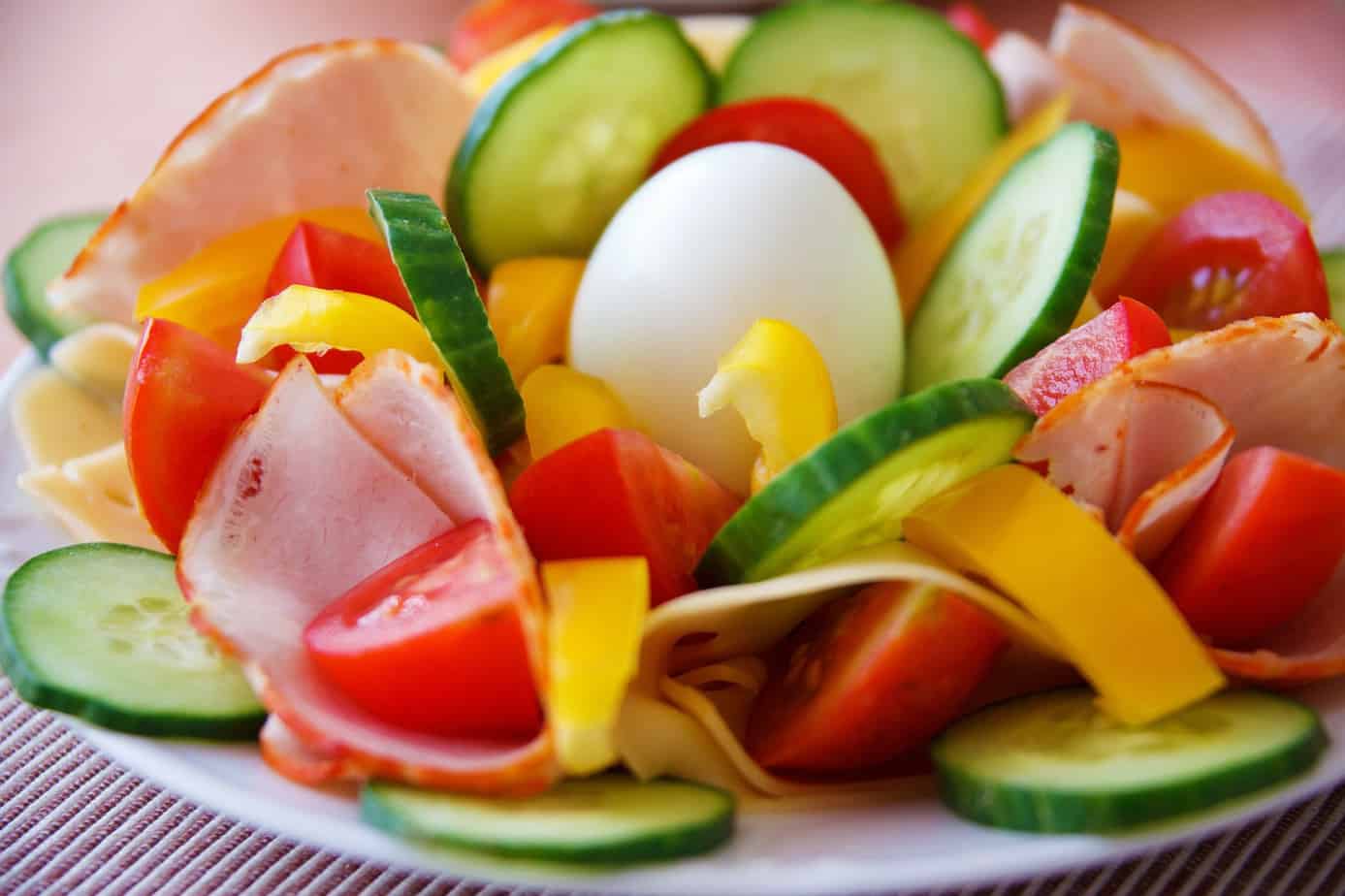
Handling Fruits and Vegetables
Like any food, produce is best when its bought at the peak of freshness and eaten soon afterward. In general, a head of lettuce or a whole melon will be a safer choice than a bag of lettuce or pre-sliced fruit. And all produce should be kept separate from meat and dairy products when bagged at the grocery store and in the refrigerator. One rule of thumb is to always refrigerate any produce that’s been pre-cut or packaged.
There are commercial products for cleaning fruit and veggies before use, but they’re not necessary. When you’re camping, just run them under water to wash them off, even if you’re not going to be eating the outside part. For firm vegetables, keep a designated brush around for giving them a light scrub while washing. Dry all produce with a clean paper or cloth towel, and cut away any bruises or imperfections before using it.
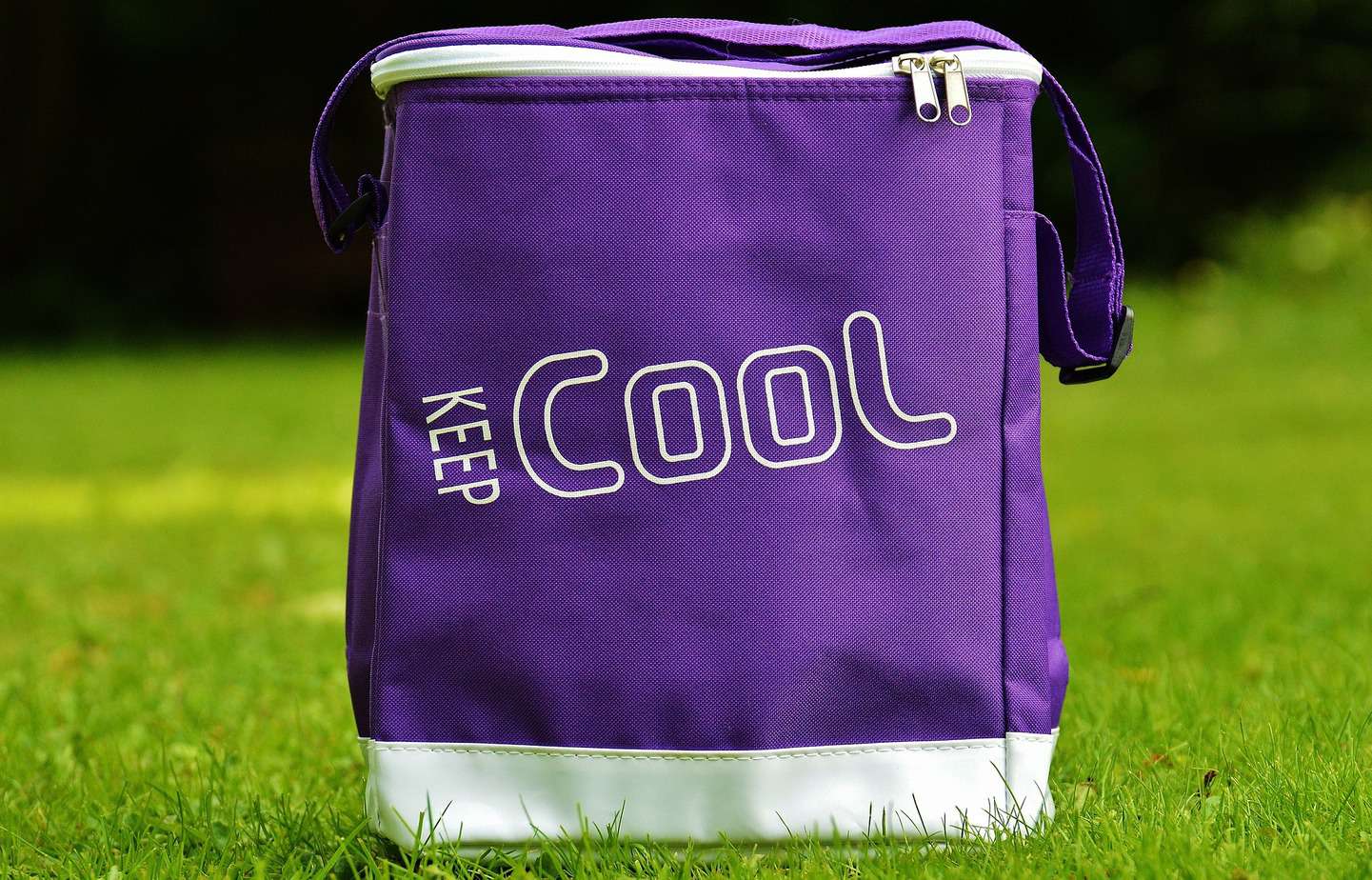
The Cooler is King When Camping
First of all, your aim when camping is to keep your cooler at least as cold as your refrigerator, at 40 degrees Fahrenheit. There are some nifty tricks to get your cooler that cold and keep it that way, and the first one is to fill it with ice blocks the night before and remove them when you’re ready to load the cooler. The next tip is to pre-freeze some of your foods or beverages, so they can act as extra ice until they thaw. Here’s a list of what to freeze:
Beverages
Separate your beverages into 16-ounce plastic bottles and seal the lids tightly, making sure there’s enough room for the liquid to expand when it freezes. Juice, water, and even milk can be frozen this way.
Meats
Wrap steaks or hamburger patties in wax paper first, then in plastic wrap. Put each steak into an individual watertight zip baggie, and squeeze all the excess air out when you seal it.
For lunch meat, put only enough meat for a couple of sandwiches in each bag, so you never have to thaw out more than you need at one time. Freeze hot dogs in their original packaging, also inside a separate zip bag. Burgers and hot dogs can be thrown on the grill frozen, and they turn out just fine.
Fruit
If you’re going on a camping trip when the weather’s hot, frozen mixed fruit chunks can be a treat at the campsite. They taste good and can help cool everyone down.
BPA-Free Plastic Containers Rock
You can’t beat plastic containers with sealed lids for transporting food to a campsite. Get the clear kind in several shapes and sizes, and you’ll be amazed at how they help you stay organized when preparing meals.
Also, the containers will keep crackers and cookies from turning to crumbs with all the lugging around of camping supplies.
The Burlap Bag Method of Storing Produce
The evaporation of water creates coolness, and that’s why storing your fruit slightly damp can help it last longer. Try putting fruit in a wet burlap bag and hanging it under a shady tree in the direction the wind is blowing.
The burlap breathes, so the fruit won’t stay too damp as the evaporation lowers the temperature. Every now and then, you’ll need to re-wet the burlap.
Here are some common mistakes to avoid:
Accidental Food Spoilage
One mistake is putting all of your food and beverages in one large cooler. Every time someone opens the lid to get a drink or snack, the warm air gets in and starts thawing the food you want to keep cold.
The best way to avoid this is to have one cooler just for food that you’re going to use for cooking meals and a separate one for drinks and snacks.
Not Securing Food from Animal Pests
When the campsite is empty, you’d be surprised at the damage that can be done by birds, squirrels, raccoons, or even a stray dog from another campsite. That’s why you should clean up every crumb after each meal.
Even when your food supplies are locked up tight, you’ll want to keep them in a different area of the campsite than your tent. That way, if you do get a curious bear nosing around the area, they won’t be right next to you while you’re sleeping!
Remember that if an animal can’t smell your food, they won’t plunder it. Never keep any food in your tent, and that even includes chewing gum. Wash your hands before and after a meal, so that food scents don’t linger. Food in the garbage bin will also attract critters.
If your campsite doesn’t have an animal-proof garbage receptacle, hang your garbage in a bear bag or store it, double- bagged, in the trunk of your car.
Not Enough Attention to Proper Hygiene
Definition of hygiene: Hygiene is simply practicing cleanliness and maintaining the best health through good habits. Here are some of the most important areas to pay attention to when you’re camping.
Wash your hands frequently: To avoid contaminating yourself or food you touch with pathogens, always wash your hands after going to the bathroom. When camping, make sure to wash your hands at an area away from any fresh water source.
Dry your hands with paper towels or a cloth towel used only for that purpose. Always wash your hands before and after preparing a meal, and shake dry snacks from a bag into a bowl or your hands instead of reaching into the bag for them. It’s helpful to carry a small bottle of hand sanitizer with you for times when you can’t wash your hands.
Keep meat and other foods separate from each other: Double-bag meat that’s being stored in the same cooler as other foods. Never cut cheese or produce on the same cutting board that you cut meat without washing it thoroughly first. If you cut and freeze the meat ahead of time, it can help keep other foods cold.
Use a thermometer in the cooler and add more ice frequently: Don’t just rely on your sense of touch to make sure the food supply is cold enough. Bring along a cooler thermometer to make sure you’re keeping the food stored at 40 degrees Fahrenheit or lower. If you can, add more ice each day to keep the camping food fresh.
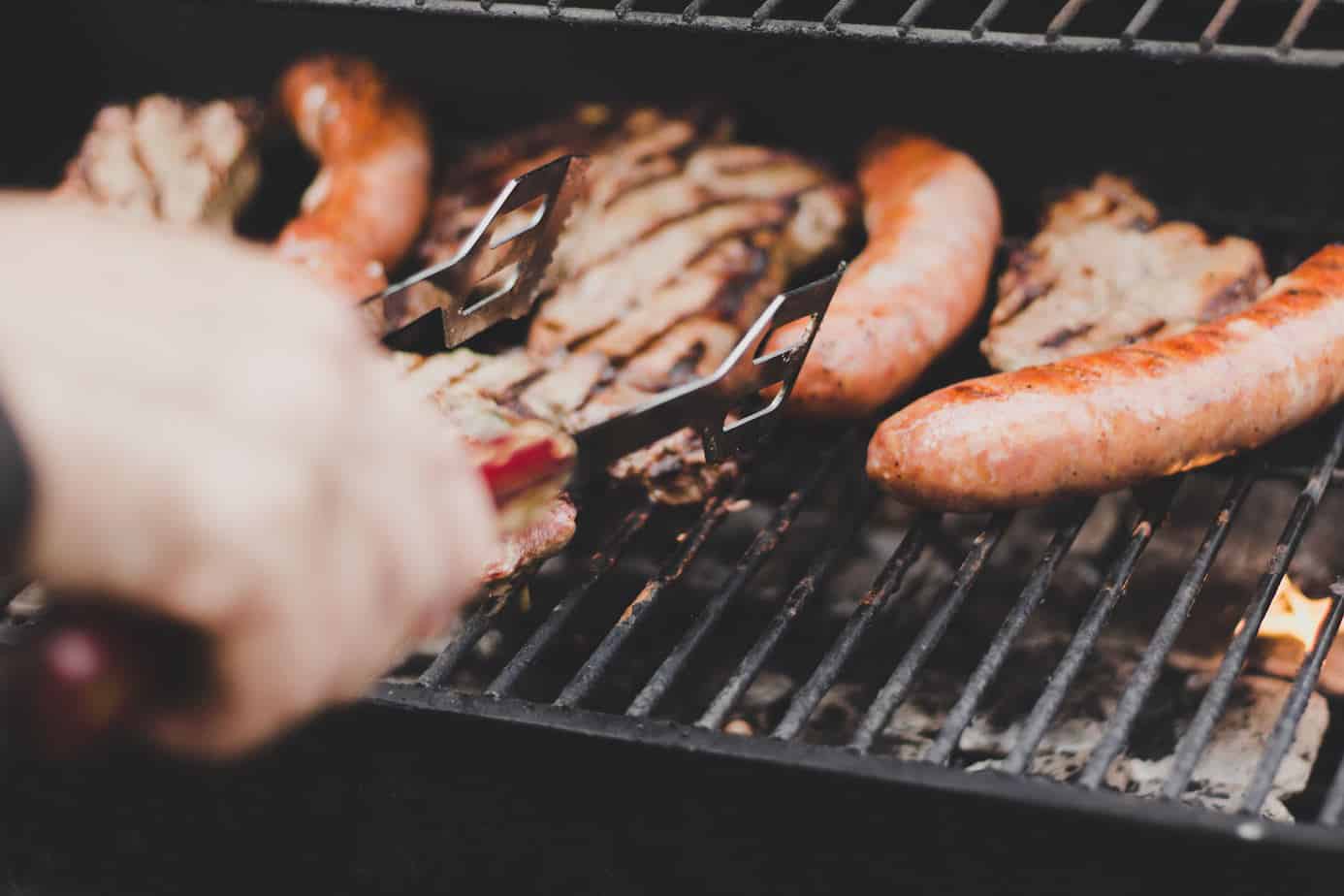
You Can Eat Well in the Wilderness
If you use common sense and the tips we’ve given here, there’s no reason not to eat well on your next camping trip. Perishable food will last for a week if it’s kept at the right temperature, and pre-freezing some of your supplies is a big help. Remember to keep all your food stores in the shade, in a separate location from your sleeping area. And practicing good hygiene will keep you and your fellow campers from falling prey to food-borne illnesses. Enjoy your next campout!

